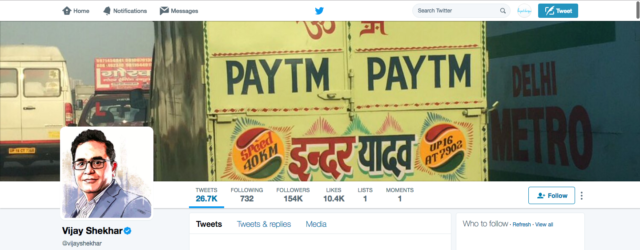
Vijay Shekhar Sharma, Founder & CEO of Paytm proudly displays this image on his twitter account.
‘Ok Tata’ — a very commonly painted phrase on the commercial vehicles in India is a symbol of aspiration and mass acceptance. Tata, is a brand name well known in the automobile industry. The brand satisfaction made the truck drivers adopt it as an expression of goodbye (ta ta) and their desire to be a seen as a happy-go-lucky person – their aspirational identity.
Similarly, Paytm, an online payment platform is gradually moving towards winning a crown of the most sustainable mode of payment in today’s digital era. Is Paytm close to becoming the next ‘OK Tata’ of the Indian economy?
Paytm, the largest mobile commerce platform in India started with the idea of offering mobile recharge and payment of utility bills in 2010. Initially, it targeted the young audience who are tech savvy but later it fragmented its services to fulfil daily requirements using the phone and thus expanded its target group to cover the maximum of the Indian economy. It aimed to reach the common person and make them independent in various monetary transactions.
Today, Paytm is seen everywhere including malls, grocery stores, tea stalls, cabs, parking lots and much more. It has over 200 million users on its platform and aspires to convert this number from 200 million to 500 million by 2020, comprising of almost half of the Indian economy. Paytm was very much aware of the elements that would stimulate its adoption and suitability according to the Indian mass.